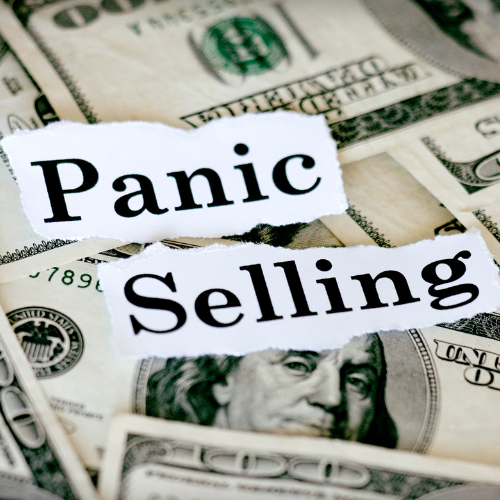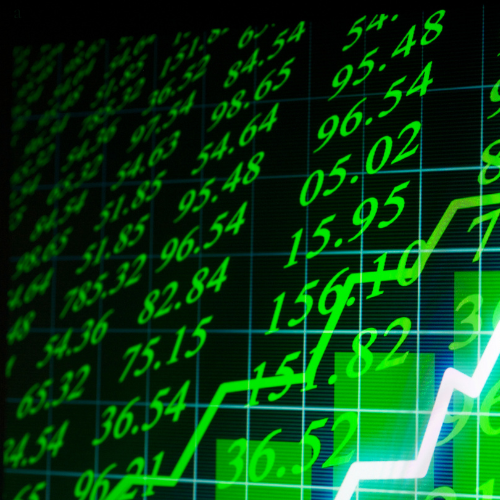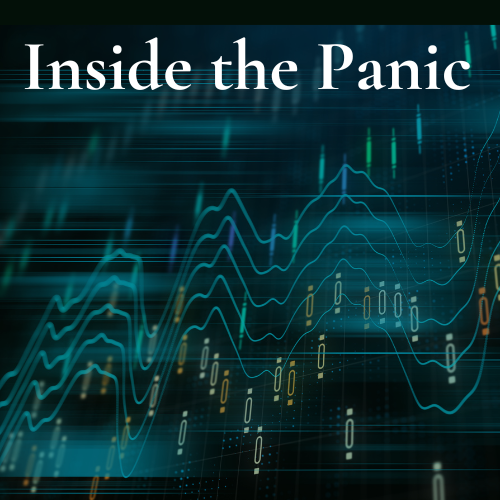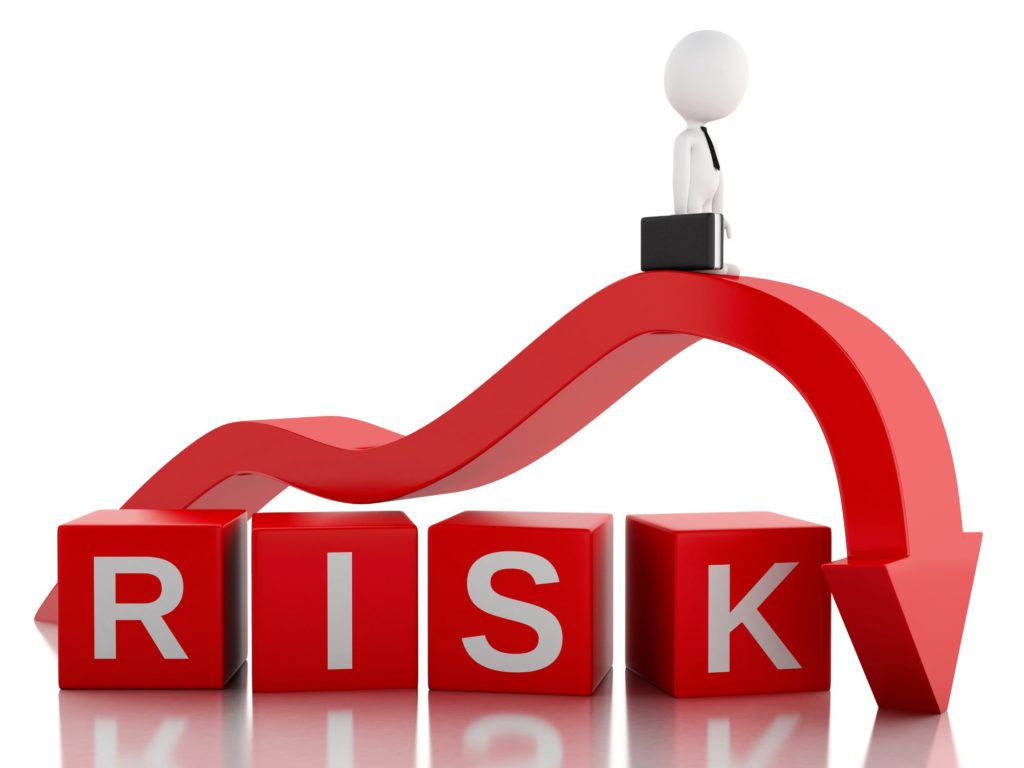1. The Panic Paradox
Tariffs are rattling the markets. The headlines scream recession. Tickers bleed red, and fear is spreading fast.Your phone lights up with red alerts, and talking heads on TV mutter words like collapse, recession, and uncertainty.
This week’s market correction—fueled by sweeping new tariffs and rising global tension—has investors rattled. The S&P 500 just erased $3.1 trillion in value. The Nasdaq’s in a freefall. And the Russell 2000? It’s officially in bear market territory.
So yeah—things look bad.
But here’s the thing about “bad”…
History doesn’t agree.
In fact, history suggests that these exact moments—the ones dripping with fear—are when the smart money quietly steps in.
Because if you zoom out, every correction, every crash, every chaos-laced headline… tells the same story:
Markets don’t just crash. They transfer wealth.
The ones who panic sell… hand their future profits to the ones who stay calm, stay focused, and strike when the noise is loudest.
It’s Called the Panic Paradox:
 When everyone else is sprinting toward the exits, the biggest fortunes are being made by those quietly slipping in through the side door.
When everyone else is sprinting toward the exits, the biggest fortunes are being made by those quietly slipping in through the side door.
Warren Buffett’s most famous advice?
“Be greedy when others are fearful.”
Sir John Templeton, one of the greatest investors in history?
“The best time to buy is when there’s blood in the streets.”
Right now, that blood is on full display.
But what matters next is whether you’re…
✅ One of the many watching history repeat itself.
✅ Or one of the few making history repeat itself—in your favor.
So ask yourself:
Are you the one watching in fear?
Or the one quietly preparing to strike?
Because moments like this don’t last long.
2. Be Greedy When Others Are Fearful (And Here’s Why It Works)
“Markets have been panicking since 1929. Smart money’s been buying that whole time.”
If you’re feeling anxious right now—you’re not alone.
The market’s down. Volatility’s up. The headlines are relentless.
But fear itself? That’s not the problem.
The problem is what fear makes people do.
It makes them sell early. Sit on the sidelines. Miss the moments that matter most.
But the investors who win big—the ones who show up on magazine covers and build generational wealth—don’t act like everyone else.
They lean into fear.
They treat it as a signal, not a stop sign.
They know something most people don’t:
The edge is in the discomfort.
This isn’t just a theory. It’s a track record.
The Psychology of a Market Winner
 Warren Buffett, the Oracle of Omaha himself, made it clear:
Warren Buffett, the Oracle of Omaha himself, made it clear:
“Be fearful when others are greedy, and greedy when others are fearful.”
Sir John Templeton?
He built his fortune buying into countries and stocks no one wanted to touch during global crises—and watching them multiply in value.
Howard Marks?
He says that the biggest gains come from “buying when perception is at its worst.”
Why does this work?
Because fear pushes most people away from opportunity.
And that mispricing—that emotional stampede—creates the exact conditions where explosive gains happen.
⚖️ Fear vs Regret
You might be afraid of losing money right now.
Totally normal.
But here’s the question that separates average investors from elite ones:
Will you regret being a little afraid?
Or will you regret missing the move of the year?
Because historically, it’s not fear that stings—it’s looking back, knowing you had the chance and didn’t take it.
Ask anyone who sat out the COVID rebound.
Or the 2009 small-cap surge.
Or the 2020 tech recovery.
They didn’t lose by making bad decisions.
They lost by making no decision.
What Makes This Moment Special?
We’re not asking you to throw darts at falling knives.
We’re saying this: moments of maximum fear are also moments of maximum asymmetry.
That means your downside is often already priced in…
But your upside?
Wide open.
The setup is coiled. The fear is priced in. What comes next depends on whether you’re ready—or watching from the sidelines.
3. History’s Hidden Pattern: Market Panic = Asymmetric Upside
When markets tumble, most investors freeze. But those who move strategically during the chaos are often the ones who write the stories everyone else reads later in awe.
Let’s look at just a few examples of what happens when conviction meets volatility:
Novavax (NVAX) – From $4 to $180 in Under a Year
In early 2020, Novavax was a relatively unknown biotech stock trading around $4 per share. Then the pandemic hit. While many fled the markets, savvy investors recognized the upside in vaccine-related plays. Within months, Novavax surged past $180, rewarding bold entry with 4,400%+ gains.
The opportunity wasn’t obvious. It was hidden inside fear, uncertainty, and red market screens.
It wasn’t a long-term hold. It was a high-volatility sprint that rewarded speed and positioning—not luck.
⚡ Tesla (TSLA) – Crisis-Born Giant
Rewind to 2008. The financial crisis had decimated portfolios, and the idea of investing in an electric car startup seemed almost laughable. But when Tesla IPO’d in 2010 at just $17, a few brave early adopters saw more than just a car company—they saw disruption.
By 2021, that $17 had become over $800, excluding splits. Those who waited for “certainty” missed one of the most iconic runs in history.
Palo Alto Networks (PANW) – Quiet Climb Amid Global Tensions
In 2018, amidst trade wars and cyber threat headlines, Palo Alto Networks hovered near $160. It wasn’t flashy. It wasn’t hyped. But cybersecurity demand was quietly skyrocketing.
By mid-2019, it had climbed to $260+, a clean 60%+ return in under 12 months—without the wild swings of meme stocks or speculative noise.
The Common Thread?
Each of these opportunities came during uncertainty, fear, or post-shock markets. None of them felt easy at the time. But each one massively rewarded those who could see past the headlines.
And the investors who waited?
They didn’t just miss gains. They missed a once-in-a-cycle setup—where risk was mispriced, and the upside was exponential.
“Volatility doesn’t destroy wealth. Hesitation does.”
This exact type of window is opening again. Small-cap stocks are oversold. Sentiment is collapsing. But the smart money knows what happens next.
Are you ready to act—or will this be another “I should’ve” moment?
4. Why Small Caps Are Built for This Moment
 The market is oversold. But small caps? They’re compressed—coiled like springs.
The market is oversold. But small caps? They’re compressed—coiled like springs.
Over the past few weeks, institutional money has rotated to the sidelines. Tariff headlines, macro jitters, and rate uncertainty have triggered broad-based pullbacks. But here’s what most traders miss: institutions move slow. They manage billions. Their exits aren’t precision strikes—they’re fire drills.
And when that happens? They leave footprints. Gaps. Price distortions. Temporary undervaluations.
That’s where you come in.
While the market is still licking its wounds, small-cap stocks—especially those under $5 or even under $1—are often the first to snap back. They’re lighter, faster, and more reactive to retail momentum.
Why?
Because small caps aren’t weighted down by institutional ownership. They move on news, sentiment, and early accumulation. One high-volume day, one whisper catalyst, and a forgotten stock can explode.
And right now, many of these setups are quietly forming.
You won’t see them on CNBC. You won’t hear about them in analyst calls. But the coil is tightening—and when the snap happens, it won’t wait for headlines to catch up.
This is the window.
The market overreacts. That’s your opening.
It always has been.
5. What We’re Seeing Right Now (Without Spoiling It)
We’re tracking something big.
Right now, there’s a setup flashing across our radar that checks every box:
✅ Trading under $1
✅ In a red-hot sector
✅ Strong volume signals + early accumulation
✅ Technicals forming a classic pre-breakout coil
✅ Insider-style buying behavior in recent prints
Our chart models are lighting up green across the board. Momentum indicators? Surging. Sentiment shift? Quiet but visible. And when you’ve been doing this long enough—you know the early signs.
This isn’t just a bounce candidate. It’s shaping up to be a move.
The kind that goes from whisper… to wildfire.
We can’t drop the ticker just yet—but trust this:
You’ll want to be on the list when the alert drops.
Because while most traders are still looking backward at the panic, we’re already locked in on the next breakout.
6. This Is Why Our Community Exists
If you’ve been wondering when to act—or what to act on—you’re not alone. That’s exactly why Small Cap Exclusive exists.
We’re not here to chase hype or throw out daily noise. We focus on high-conviction alerts only—the kind that come after deep research, technical alignment, and an edge that’s actually timed to matter.
We’ve caught breakout plays that delivered triple-digit runs.
We’ve helped thousands of traders avoid false starts and focus their attention when the signals are real.
No fluff. No “maybe.” Just sharp insight delivered when it counts.
With over 30,000 traders on our radar, this is a movement built around one thing:
Knowing when to move—and having the alert in-hand before the crowd sees it.
Because when the setup is right, and the timing is tight, hesitation costs money.
This isn’t about watching from the sidelines.
It’s about being plugged in, ready, and early.
7. Final Call: The Window’s Open. For Now.
These moments don’t last.
Markets correct fast. But they rebound even faster. And when they do, those who were prepared—the ones who stayed calm, positioned smart, and got the right signal—are the ones who come out ahead.
This right here?
This could be one of those moments you look back on and say:
“I saw it coming… and I moved.”
Or…
“I hesitated… and missed it.”
Your mindset determines which.
We’re not saying this to create hype—we’re saying it because this setup is unfolding in real time.
Volatility is high.
The signals are firing.
⏳ The next move could trigger this week. And by the time the crowd sees it—it’ll already be priced in.
The only question is:
Will you be the first to know—or the last to catch up?
✅ Join the Free Alert List Now — Before the Crowd Catches On
Want instant SMS alerts? Opt in to get the next breakout the moment it drops







